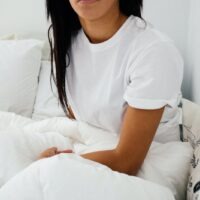Mahjong, with its intricate tiles and rich history, is far more than just a game. It’s a cultural cornerstone, a social ritual, and a testament to the depth of human strategy. If you’re looking to immerse yourself in this captivating world, a great starting point is the platform Mahjong.online.
Origins: A Game Rooted in History
Mahjong’s origins are steeped in mystery. Most agree it has Chinese roots, dating back to the Qing dynasty. However, its exact inception is a matter of debate. Some suggest it evolved from existing card games, while others believe it was invented by a nobleman confined in his residence.
Regardless of its true origins, the game quickly spread throughout China and, eventually, the world. Today, you’ll find different versions of Mahjong in Japan, Korea, and even the U.S.
The Tiles: Symbols and Meanings
One of the most distinctive aspects of Mahjong is its tiles. A standard set comprises 144 tiles, with four identical sets of tiles in these categories:
- Bamboos: These depict stalks of bamboo and are numbered from one to nine.
- Characters: Represented by Chinese characters, these tiles also range from one to nine.
- Dots: Depicting circles, these tiles are numbered as well.
- Winds: Representing the four compass directions: East, South, West, and North.
- Dragons: There are three dragon tiles – Red, Green, and White.
The artwork on these tiles is not just beautiful; it’s symbolic. For instance, the four winds correspond to the four directions and seasons, reflecting the game’s embeddedness in natural cycles.

Playing the Game: Strategy and Social Connection
While the game mechanics involve drawing and discarding tiles to form specific sets, Mahjong is much more than matching tiles. It’s a game of strategy, intuition, and even psychology.
Players need to think several moves ahead, consider what tiles others might need, and decide whether to play offensively or defensively. Observing your opponents’ moves can give away what hand they might be forming.
Beyond the game strategy, Mahjong is a social experience. Traditionally played by four players, it often serves as an occasion for friends and family to gather, chat, and enjoy each other’s company. In many cultures, a Mahjong evening is akin to a card game night in the West.
The Global Phenomenon: Variations Around the World
As Mahjong traveled, it adapted to the cultures it touched:
- Japanese Riichi: Incorporates unique scoring rules and the use of a “riichi” declaration when a player is one tile away from winning.
- American Mahjong: Introduced joker tiles and unique hands that change yearly.
- Korean Mahjong: Features a simpler scoring system and some unique tiles.
Each variation offers a fresh perspective on the game, emphasizing different aspects and adding new layers of strategy.

Mahjong Today: Digital Revival
With the rise of the digital age, online Mahjong platforms have surged in popularity, introducing the game to younger generations and allowing players from all over the world to connect. While the tactile sensation of handling tiles is irreplaceable, the digital version offers accessibility and global competition.
Epilogue: The Rich Tapestry of Mahjong
Mahjong is more than a pastime; it’s a journey through history, culture, and human connection. Whether you’re a seasoned player or just starting, each game promises a blend of strategy, intuition, and camaraderie. Dive into the world of Mahjong, and discover the stories told by each tile.






